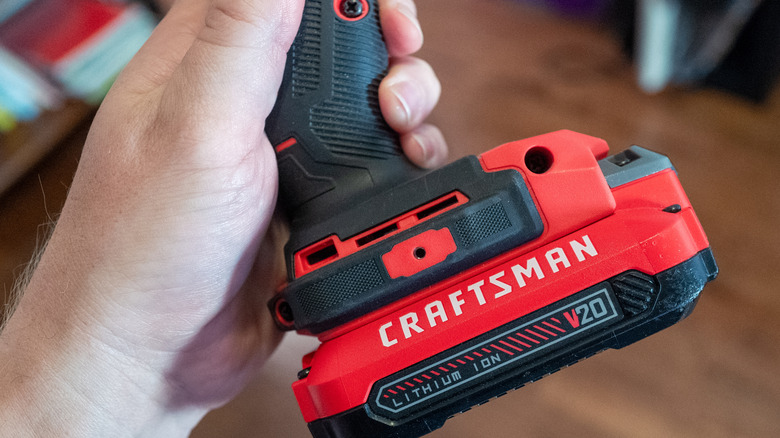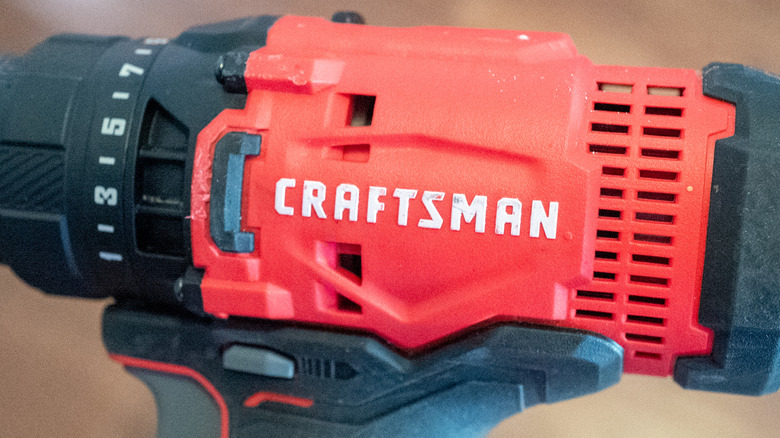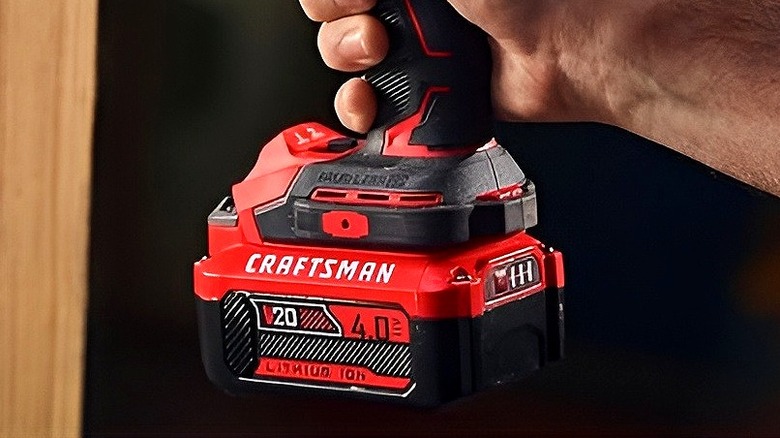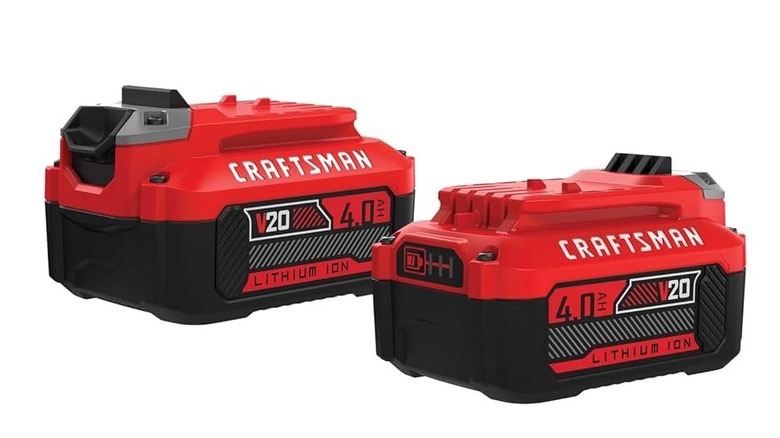3 Of The Most Common Problems Users Have With Craftsman Power Tool Batteries
We may receive a commission on purchases made from links.
Creativity, skills, and discipline are all crucial qualities that every DIY enthusiast or professional builder should have. However, these virtues mean nothing if you don't have a proper set of tools. That being the case, if you're searching for the best power tools to add to your garage, you can never go wrong with the selection from Craftsman. It sports a variety of solutions for all drilling, cutting, and grinding needs. Best of all, its budget-friendly items are well-suited for beginners and experts alike.
Just like other major power tool brands, Craftsman has an impressive cordless power tool lineup. Its 20-volt rechargeable battery can be swapped between different Craftsman tools, from saws to trimmers to drills, saving you money and space. However, while Craftsman batteries are designed to offer consistent performance, like any lithium-ion pack, their performance will degrade over time.
On average, you can expect a Craftsman lithium-ion battery to last from two to three years (or 300 – 500 charge cycles). But that's not guaranteed. Things like overcharging and storing in areas with fluctuating temperatures can negatively affect their lifespan. When this happens, you might notice little quirks and frustrating issues that are making your tools less reliable. With that said, let's explore some of the common problems that Craftsman users run into with their power tool batteries.
Craftsman battery fails to charge
One of the most common problems experienced by Craftsman power tool owners is a battery that won't charge. You slide the battery onto a charger, wait for the light to turn green ... and nothing. Maybe the light blinks, stays dark, or flashes an error code you've never seen before. When this happens, you might think your battery is toast — but that's not always the case.
It may not seem like it, but the issue might just be a dirty charger. If the contacts are corroded or dusty, the battery won't connect. To remedy this, give your charger a quick wipe with a dry cloth. If it is clean and the issue persists, you'll want to inspect the battery itself. A drained battery may also be the culprit. Storing a battery for too long will deplete its cells and halt the unit from receiving power. At this point, you might be tempted to reset your battery, but it's not worth the risk. In most cases, a Craftsman battery that refuses to charge is nearing the end of life, and your best bet is to replace it.
Craftsman battery overheats or has a burning smell
Unlike slow charging or shorter runtimes, overheating isn't something you can ignore. When in use or charging, your battery will typically generate a little heat as a result of chemical reactions. However, extreme temperatures paired with an unusual smell are clear signs your power tool battery needs to be replaced.
That last statement wasn't an exaggeration — once a battery shows these signs, it is too hazardous to fix. However, by practicing proper maintenance and avoiding common mistakes that ruin power tool batteries such as overcharging and exposing to direct sunlight, you can keep this from happening. In addition, after using your power tool, don't slot the battery into a charger right away, as the heat present on the battery can still cause damage. Instead, let it cool off before putting it in the charger. Once it's full, wait for a few hours before plugging it back in and continuing the project.
Craftsman battery with shortened run time
You pop a fully charged battery into your Craftsman drill, but its power runs out in the middle of its task. Sound familiar? This pain stems from several common issues. First, is the age of the battery. Every time a lithium-ion battery is charged it loses some capacity. That means a pack that used to power through a full day will deliver a fraction of that after a few hundred cycles. It's not a defect — just the normal wear and tear of battery cells that occurs after each charge cycle.
Everyday habits can play a role. Charging the battery in an environment with extreme temperatures or storing a dead unit can reduce its runtime and wreck havoc on its lifespan. To avoid this, don't wait till they are completely dead to charge them. You also don't want to store your tool batteries in a hot garage or car. If you plan to store your Craftsman battery for a whole season, don't charge it fully. Instead, let it reach at least 50%. After that, store it in a cool, dry location that's away from direct sunlight and moisture.



